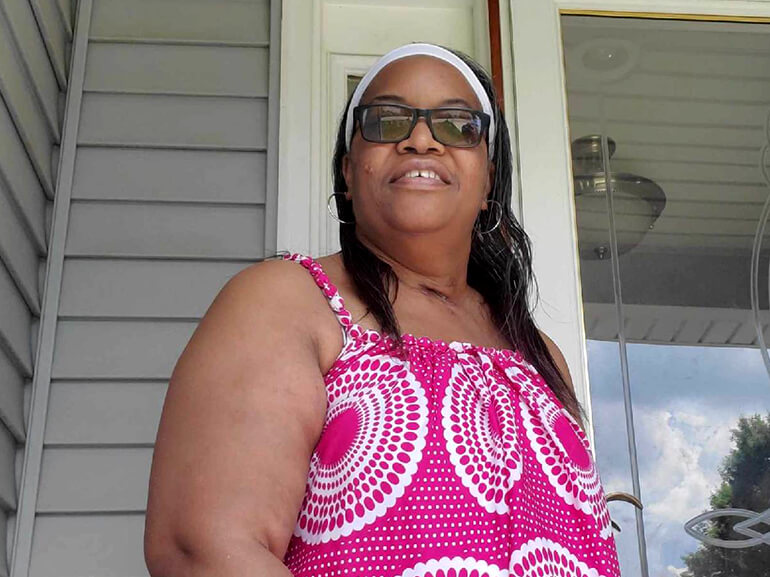Charlene's Story

Back home – and smiling
Charlene Jones, lost her sense of taste and smell in mid-March. This wasn’t normal for the 52-year-old union organizer, and when she heard news reports describing the phenomenon as a symptom of the coronavirus, she grew concerned. Over the next five days, harsh coughing and extreme fatigue became the norm.
Charlene’s husband drove her to the emergency room and the triage squad recorded a 102.5 temperature and low oxygen levels. Tests revealed she was COVID positive.
Admitted to intensive care, Charlene struggled through pneumonia and was placed on a ventilator, airway support and feeding tube. Her tongue swelled and doctors used leeches to reduce its size.
Charlene clung to life over the next few weeks. Strapped to a rotating bed, she was proned, or placed stomach-down, to give the lungs more space to use oxygen.
By April, Charlene stabilized and doctors recommended Select Specialty Hospital – Flint for its experience treating coronavirus survivors on ventilators.
Charlene wanted to get back to her family and job, so a physician-led team of nurses, therapists and dietitians created a plan for recovery.
On the first day, the respiratory and pulmonology team evaluated and began testing whether Charlene’s lungs were ready to do more work.
The team led her through breathing, coughing and chest exercises. Therapists gradually reduced the ventilator’s settings and placed a valve in the tracheostomy, permitting more normal speech. After two weeks, Charlene liberated from the ventilator.
Speech-language pathologists and dietitians stepped in, leading her through mouth, tongue and jaw exercises to strengthen swallowing muscles, while dietitians crafted meal plans with proper textures and nutritional balance.
As she grew stronger, physical and occupational therapy put Charlene through a mobility program. Twice daily, they encouraged her to sit up, roll in bed and move to a chair. Occupational therapists helped her practice daily living activities, such as brushing her teeth while seated. Finally, therapists helped her stand up and take several assisted steps.
Physical therapists trained her to use a cane, while respiratory therapists used video chats to coach her daughter on caring for a tracheostomy – the airway support at Charlene’s throat.
On May 5, Charlene was well enough to go home. She moved in temporarily with her sister to continue recuperating.
By June, she was breathing well enough to have the airway support removed. Charlene sent us a picture of herself on her front porch, smiling.